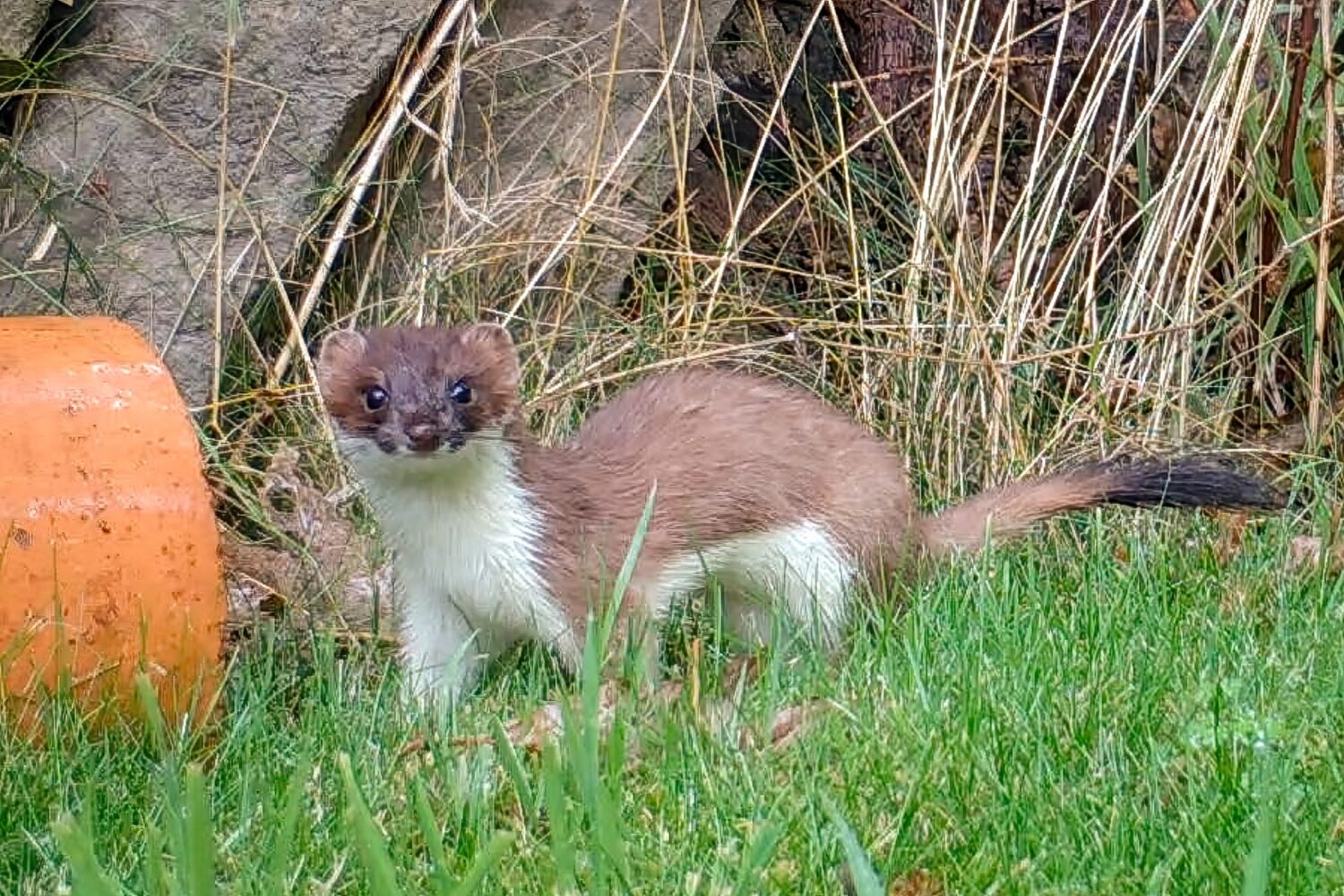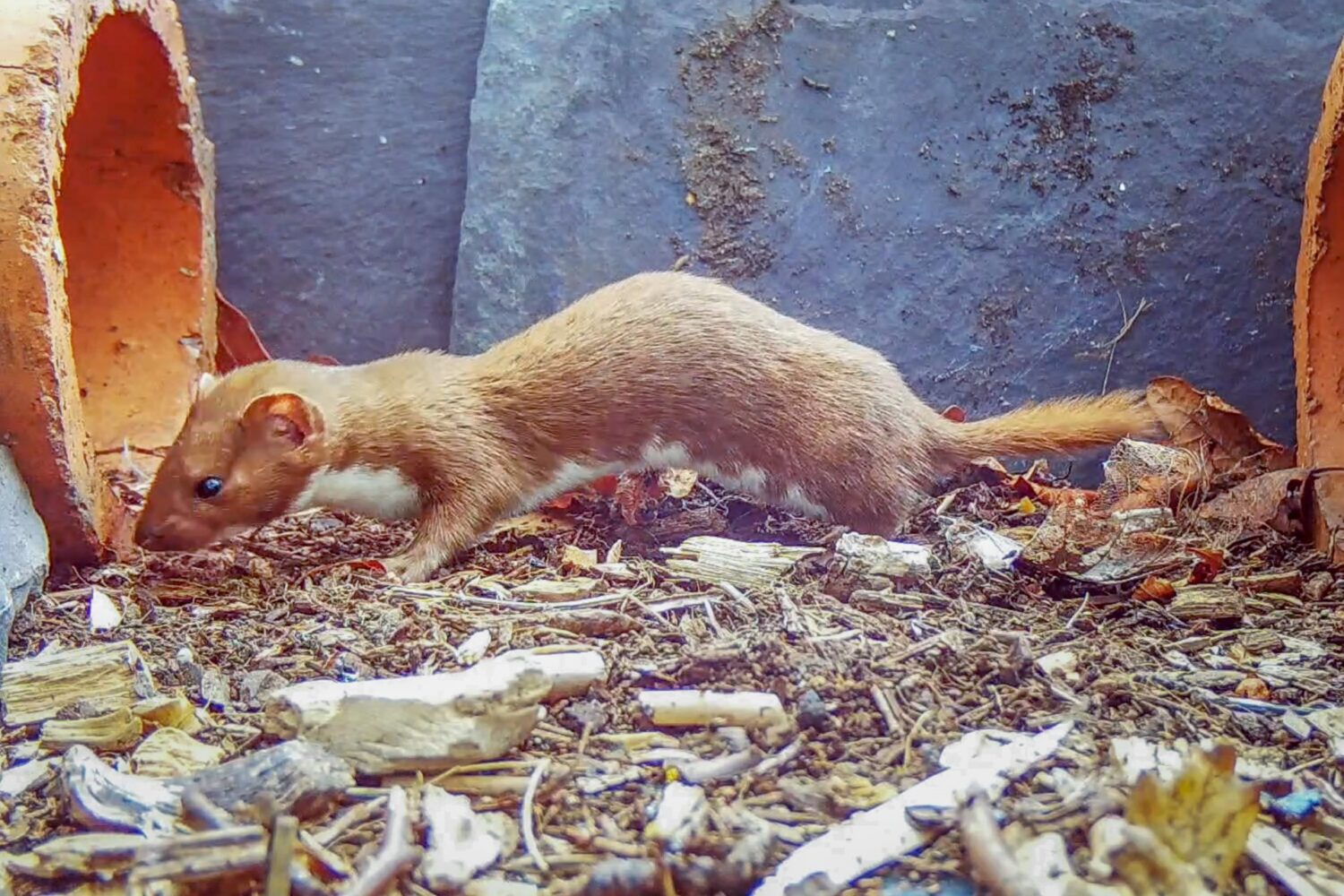Enjoy a closer look at Gosforth Nature Reserve’s small mustelids in a new blog by local naturalist and volunteer, Christopher Wren.
There have been sightings of both a weasel and a stoat in Gosforth Nature Reserve this month but seeing one is mostly a matter of luck. These are the smallest members of the Mustelid (weasel) family which also includes polecats, pine martens, otters and badgers.
The weasel (Mustela nivalis) is the world’s smallest mammalian carnivore, a female being only about 18cm (7 inches) long and weighing only about twice as much as a bank vole, its favourite prey. The stoat (Mustela erminea) is larger – a female up to 27 cm, a male up to 32cm – and generally hunts larger prey including rabbits, birds and squirrels. Being closely related, weasels and stoats share a similar long slim body shape and short legs that enable them to hunt in narrow tunnels and burrows underground. These two frame grabs from trail camera videos show the distinguishing features. First a stoat – larger, with a longer, black-tipped tail and a straight border between the brown and white fur. Second, a weasel has a shorter brown tail and the border between brown and white on the body is wiggly.


Both stoats and weasels have occasionally appeared by chance on my trail cameras when they were set to look for a larger target. However, the best way to see them is to put the camera in a box with two entrance tunnels and to rely on the animals’ natural curiosity as they explore while hunting for prey. Both animals mostly stick to cover – in woodland edge, hedgerows, scrub or gardens – because that is where they are likely to find food and gain protection from predators, so that is where to put the box. The first video shows a weasel visiting the camera box.
Another video shows how fast weasels move. They are relentlessly active and curious as they explore.
The next video shows the only visit from a stoat I have recorded so far – it is a noticeably larger and more powerful animal. The visit was brief so I have added a slow-motion replay.
Occasionally, with knowledge of a weasel’s behaviour, a camera can be set to record outside. The last video shows a weasel running past with prey three times, twice with a field vole and once with a wood mouse, first at normal speed and then at 1/10th speed so we can see what is happening. The weasel carries 50% of its own body weight in its teeth while spending 90% of the time in mid-air. Astonishing.
If you are lucky enough to see a weasel or a stoat while you are out and about in Newcastle be sure to report it to the Gosforth’s Wild Web.